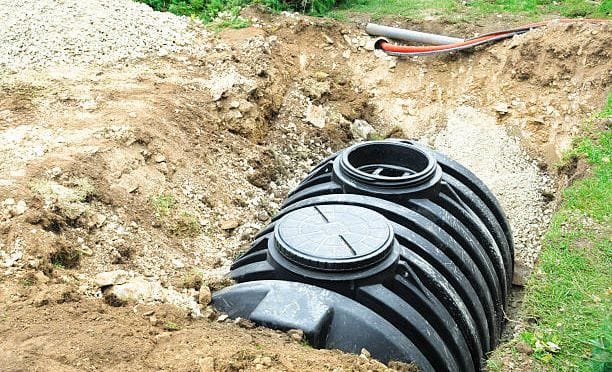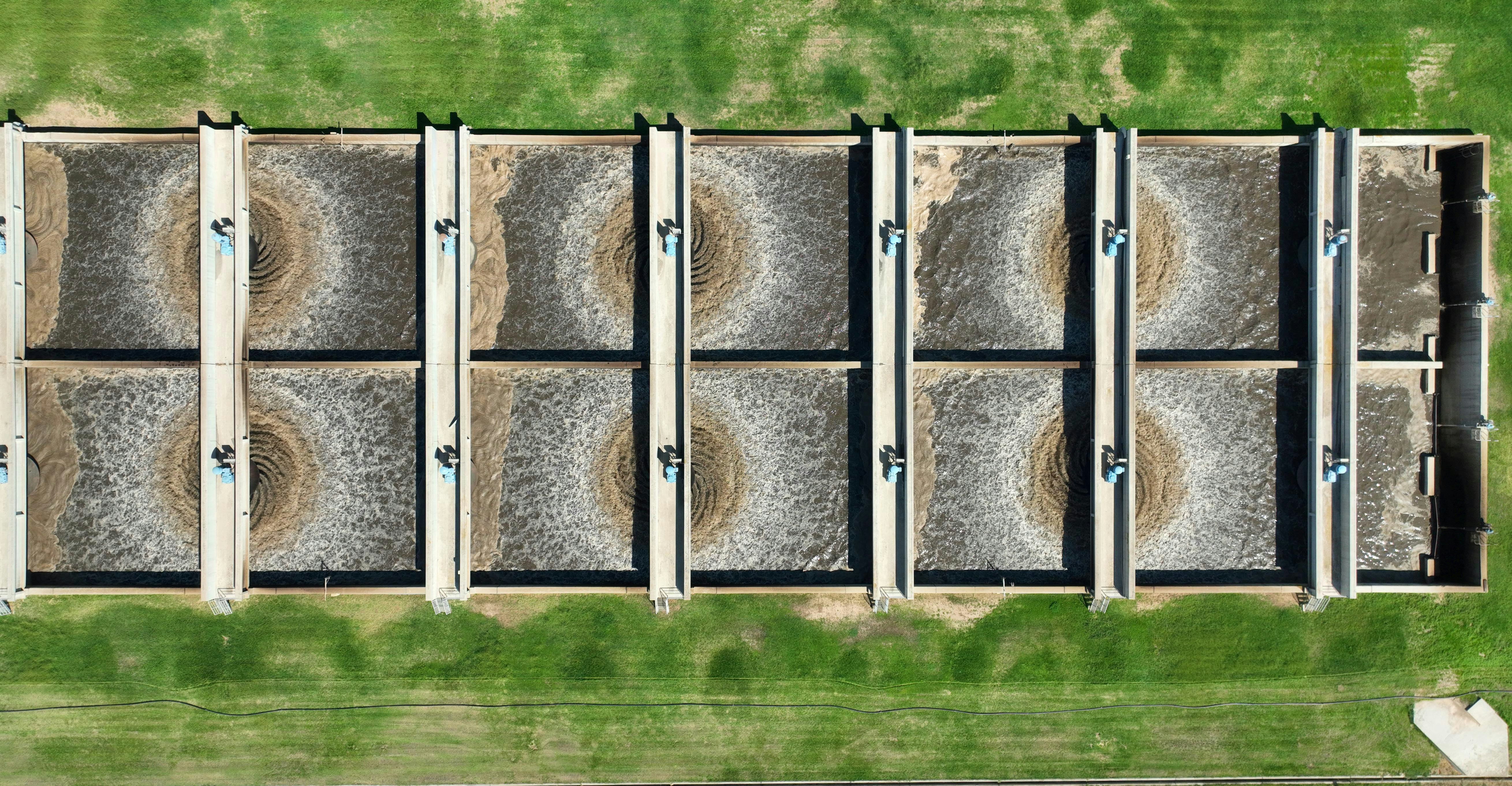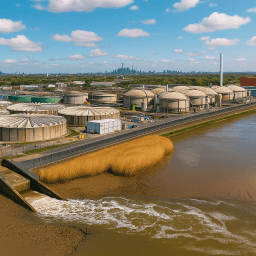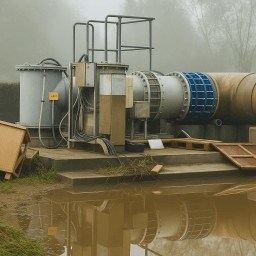
Managing wastewater effectively is essential for maintaining public health and protecting the environment. Traditional septic tanks have long been used as a solution for treating domestic and commercial wastewater. However, with advancements in wastewater treatment technology, packaged sewage treatment plants (STPs) have emerged as a far superior alternative. In this blog, we’ll explore why packaged STPs outshine septic tanks in functionality, efficiency, and sustainability.
Understanding Septic Tanks and Packaged STPs
What Is a Septic Tank?
A septic tank is a simple, on-site wastewater treatment system that relies on natural processes to separate solids, scum, and effluent from sewage. The effluent then percolates into the ground through a soak pit or leach field.

What Is a Packaged STP?
A packaged sewage treatment plant is a compact, pre-engineered system that uses advanced technologies like aerobic or anaerobic treatment, biofilms, or membrane filtration to treat wastewater to a higher standard. Packaged STPs are typically delivered as a single, prefabricated unit and are ready for quick installation and operation.
Packaged STPs: The Future of Wastewater Management
Packaged Sewage Treatment Plants (STPs) are emerging as a highly efficient solution for wastewater management, especially in residential and small-scale commercial applications. These systems offer numerous advantages over traditional setups, making them ideal for properties with limited space or in areas where conventional septic tanks may not be practical.
Benefits of Packaged STPs:
- Compact Size: Packaged STPs are designed to be compact and space-efficient, making them a great choice for homes or businesses with limited space. Unlike large, conventional sewage treatment systems, they fit into smaller areas without compromising performance.
- Ease of Installation: One of the key advantages of packaged STPs is their ease of installation. Since they come pre-assembled, the setup process is quick and straightforward, often requiring minimal excavation. This reduces both installation time and labor costs.
- Efficiency in Wastewater Treatment: Despite their small size, packaged STPs are highly efficient at treating wastewater. They use advanced biological treatment processes to break down contaminants, ensuring cleaner effluent that is safer for the environment. This makes them suitable for areas that need a higher level of treatment than a typical septic tank can provide.
When comparing package treatment plant vs septic tank, it’s important to note that packaged STPs deliver superior treatment. Septic tanks primarily separate solids from liquids, but packaged STPs offer multi-stage treatment processes that remove a wider range of pollutants, making them a more eco-friendly option for wastewater management.
Overall, packaged STPs are the future of wastewater management for residential and commercial use, offering a compact, efficient, and environmentally friendly solution to waste treatment challenges.
Here’s a detailed comparison table outlining the differences between Package Treatment Plants and Septic Tanks based on the requested criteria. You can use this in your blog to provide a clear, easy-to-read comparison for your audience.
Criteria | Package Treatment Plant | Septic Tank |
Installation Cost | Higher initial installation cost due to advanced technology and system components. | Lower initial cost, typically simpler to install. |
Maintenance Frequency | Requires less frequent maintenance, typically every 2-5 years depending on the system. | Requires more frequent maintenance, such as annual inspections and pumping every 3-5 years. |
Treatment Efficiency | Advanced multi-stage treatment process that ensures higher quality effluent, including water recycling and pathogen removal. | Basic treatment primarily through sedimentation; less effective at removing all contaminants. |
Environmental Impact | More eco-friendly due to water recycling, better pollutant removal, and lower discharge of untreated waste into the environment. | Higher environmental impact, especially if not properly maintained. Can cause contamination in surrounding soil and water if not functioning properly. |
Lifespan | Longer lifespan, typically 20-30 years, with regular maintenance. | 15-25 years, with a risk of system failure if not maintained properly. |
Space Requirements | Compact and can fit in smaller areas, making it ideal for urban or space-constrained environments. | Requires more space for installation, and typically needs a larger leach field. |

Key Advantages of Packaged STPs Over Septic Tanks
1. Superior Treatment Quality
- Septic Tanks: These systems only separate solids and scum from effluent, offering minimal treatment. The effluent often contains harmful pathogens, organic pollutants, and nutrients that can pollute groundwater.
- Packaged STPs: These systems provide advanced treatment, removing over 90% of organic and inorganic contaminants. The treated water is often suitable for non-potable reuse, such as landscaping and irrigation.
2. Environmental Impact
- Septic Tanks: The discharge from septic tanks can contaminate soil and groundwater with pathogens, nitrates, and phosphates, leading to water pollution and ecosystem damage.
- Packaged STPs: By treating wastewater to a higher standard, packaged STPs protect natural resources. They help reduce waterborne diseases and ensure compliance with environmental regulations.
3. Space Efficiency
- Septic Tanks: Require extensive space for installation, including a large leach field for effluent dispersion. This makes them unsuitable for urban or space-constrained areas.
- Packaged STPs: These systems are compact and do not require additional space for effluent disposal. They are ideal for areas with limited land availability, such as urban residential complexes, hotels, and commercial establishments.
4. Flexibility and Scalability
- Septic Tanks: Are designed for fixed capacities and cannot be easily upgraded if wastewater volume increases.
- Packaged STPs: Offer scalable solutions to accommodate growing demands. Additional modules can be added to the system, ensuring long-term adaptability.
5. Maintenance and Longevity
- Septic Tanks: Require regular pumping to remove sludge and may fail if not properly maintained. Poor maintenance can lead to blockages, foul odors, and environmental contamination.
- Packaged STPs: Are designed for low maintenance with automated operations. Advanced systems include features like self-cleaning filters and remote monitoring, ensuring efficiency and longevity.
6. Compliance with Regulations
- Septic Tanks: Often fail to meet modern wastewater discharge standards due to their limited treatment capabilities.
- Packaged STPs: Are engineered to meet and exceed regulatory standards, ensuring compliance with local and national environmental laws.
7. Cost Efficiency
- Septic Tanks: While septic tanks have a lower initial installation cost, their limited functionality and higher long-term maintenance costs make them less economical over time.
- Packaged STPs: Although the initial investment is higher, packaged STPs offer better value in the long run due to their efficiency, durability, and lower maintenance costs.
Septic Tank vs Sewage Treatment Plant (STP): Which Is Best for Your Home?
When choosing between a septic tank and a sewage treatment plant (STP), consider factors like maintenance, cost, environmental impact, and treatment efficiency. Understanding these differences will help you decide which system best suits your home’s needs.
1. Maintenance
- Septic Tank: Requires less frequent maintenance (every 3-5 years). Lower ongoing costs and easier for homeowners to manage.
- STP: Needs more frequent maintenance, including professional servicing. Higher maintenance costs due to mechanical and electrical parts.
Winner: Septic Tank – simpler and less costly to maintain.
2. Cost
- Septic Tank: Cheaper to install and maintain. Low ongoing costs.
- STP: Higher initial installation costs and ongoing maintenance expenses due to complexity and energy use.
Winner: Septic Tank – more affordable overall.
3. Environmental Impact
- Septic Tank: Limited in treating pollutants and can cause environmental harm if not properly maintained.
- STP: More efficient at treating wastewater and recycling water, making it more sustainable and eco-friendly.
Winner: STP – better for the environment with water recycling and advanced treatment.
4. Treatment Efficiency
- Septic Tank: Provides basic treatment by separating solids and liquids but less effective in removing all contaminants.
- STP: Offers advanced multi-stage treatment, removing more contaminants and ensuring cleaner water.
Winner: STP – higher treatment efficiency and better at handling large volumes of wastewater.
Conclusion
- Septic Tank: Best for small households or rural areas with limited wastewater needs. A traditional STP septic tank may be sufficient for basic wastewater treatment.
- STP: Ideal for larger homes, urban areas, or when higher wastewater treatment standards and sustainability are priorities. A modern STP septic tank offers superior treatment and water recycling capabilities.
Why Choose a Packaged STP for Your Property?
Packaged sewage treatment plants are particularly beneficial for:
- Residential Communities: Provide effective wastewater treatment for apartments, gated communities, and townships.
- Commercial Establishments: Hotels, resorts, and malls benefit from treated water reuse for landscaping or flushing.
- Industrial Applications: Handle complex wastewater from factories, ensuring compliance with industrial discharge norms.
- Rural Areas: Compact, easy-to-install systems make them a practical choice for rural and remote locations with no central sewage infrastructure.
The Role of SUSBIO ECOTREAT in Revolutionizing Wastewater Management
For those looking for the best packaged STP solutions, SUSBIO ECOTREAT is the gold standard. SUSBIO ECOTREAT is a cutting-edge, prefabricated sewage treatment plant made from durable materials and designed for maximum efficiency. Here’s why it stands out:
- Advanced Treatment Process: Employs dual treatment technology for superior water quality.
- Durable and Compact Design: Prefabricated using high-quality materials to ensure longevity.
- Energy Efficient: Consumes less energy compared to conventional systems.
- Ease of Installation and Maintenance: Quick to install and easy to maintain, with minimal operational costs.
- Environmental Benefits: Promotes water reuse, reducing dependence on freshwater resources.
Conclusion
While septic tanks have served as a traditional solution for wastewater management, the growing need for sustainable, efficient, and regulatory-compliant systems has paved the way for packaged STPs. With superior treatment capabilities, environmental benefits, and long-term cost efficiency, packaged STPs are undeniably the smarter choice.
Choose SUSBIO ECOTREAT for your wastewater treatment needs and experience the difference a modern, high-performance solution can make. With SUSBIO, you’re not just managing wastewater—you’re contributing to a cleaner, greener future.

















